Should You Get 1 Size Larger in Womens Dress Boots
"Which way do they stretch? Are they even going to stretch? I know I'm a size 11."
The pressure is on when you try on a new pair of shoes in the store and things can get even more confusing with boots: you have to consider heel slip, and many guys are taught to ignore initial discomfort in case the shoes just need to be worn in.
If you're buying them online, things can be even tougher. Nobody wants to go to the post office — sometimes more than once — to return boots only to receive a less comfortable fit ten days later.
The Health Consequences of the Wrong Boot Size
"One of the things about wearing any shoe that's too small is that it can compress the front of the foot and you can wind up with structural problems like bunions and hammer toes," says Dr. Neal Blitz, DPM, FACFAS, a foot surgeon based in New York and Los Angeles who is board certified in both foot surgery and reconstructive rear foot and ankle surgery. "If you wear a shoe that's too big, your foot won't bend at the shoe's break point where it's meant to and the arch support can be in the wrong place. That can cause inflammation, flat feet, and plantar fasciitis."
While Blitz has made a comfortable living from bunion surgery, no one wants you to suffer in uncomfortable boots. These are are the five most important things to keep in mind when trying on a pair of boots.
[Related: My list of The Best Boots You Can Buy]
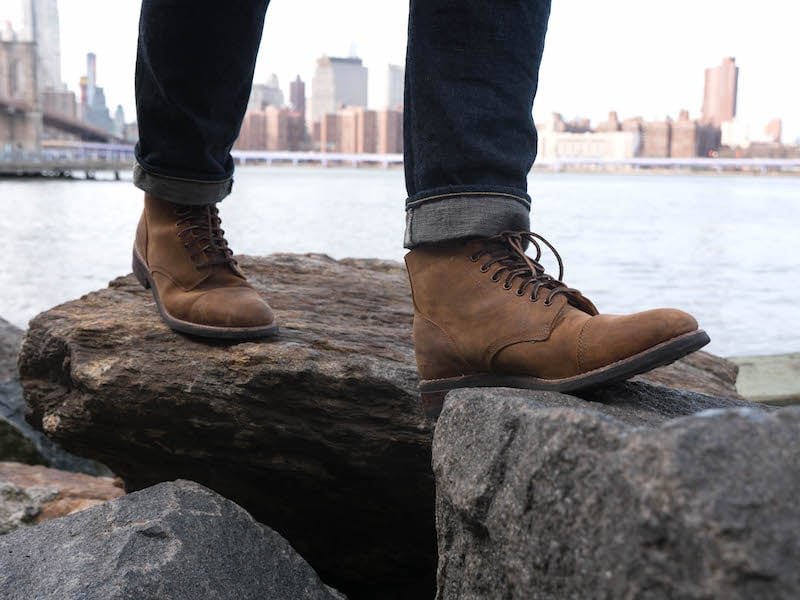
The Thursday Vanguard boot.
1. The Flex Point
- Ensure your foot breaks at the widest part of the boot
This is arguably the most important component of fit — not the width, not the heel, but where the boot breaks on your foot. No need to overcomplicate this one: every boot has a natural break point where it wants to bend, be it at the end of a stitched toe box or simply where your toes start, but that's what you need to remember. The boot must flex where your foot does, and that's at the toe line.
It may sound simple, but if a boot breaks in the wrong spot it will rub against your foot, your foot will slide back and forth when you walk, the vamp will crease and twist, and the toe box can pinch down on the toes.
You might be able to check the flex point by checking the shoe width. The widest part of the shoe should line up with the widest part of your foot, meaning the ball.
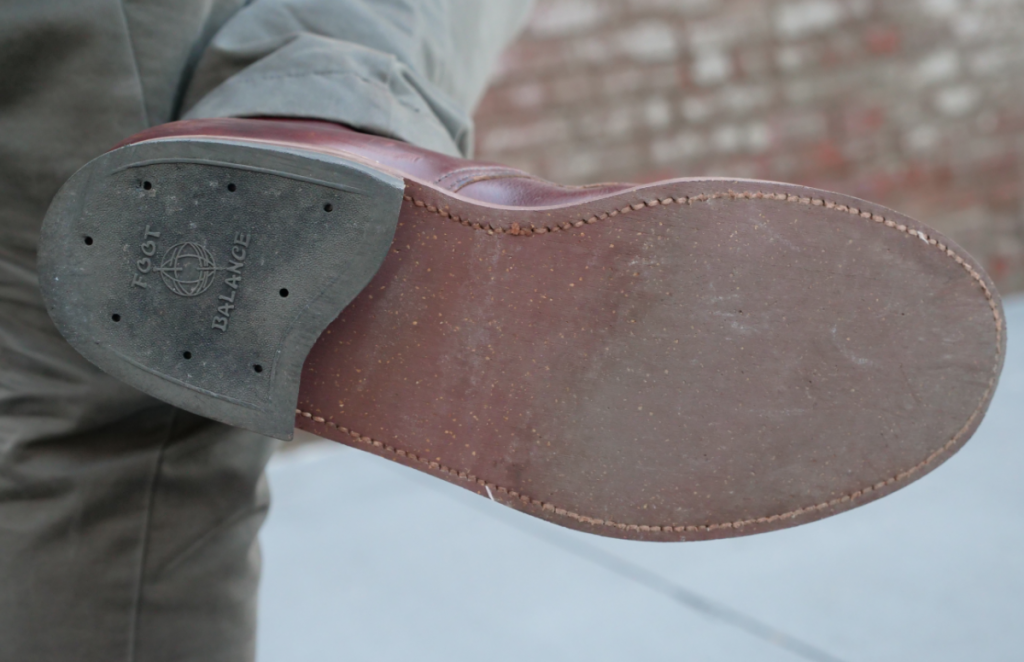
The sole of the Alden Indy 403.
2. The Heel
- A little heel slip is not a big deal and should remedy as the boot breaks in
- Product like Heel Snugs can help persistent heel slip
The next most critical part of the fit is the heel, and it might be the most controversial.
Is it OK to have some heel slip?
A lot of brands won't slip if you're wearing the right size but if everything else is fine, a little heel slip — like a quarter of an inch — is acceptable when you're trying on well-made boots. In fact, some people find that boots with zero slip on the first wear can be too stiff on the foot, particularly if they have very stiff soles. So don't worry if there's a little slippage.
As the boot molds to your foot, the slip should decrease and will probably vanish altogether as the heel counter molds to your foot's shape from friction and body heat. Unlined boots in particular have a nappy interior that's extra great for catching the heel after a few wears.
for In any case, what's more important than slippage is that the boot moves with your foot and you don't feel like your foot is moving around the inside of the shoe.
If the slippage doesn't fix itself in a few months and it's bothering you, there are plenty of cheap products, like Heel Snugs, that can easily remedy the issue.
[Related: 5 Tips to Prevent Blisters on Boots]
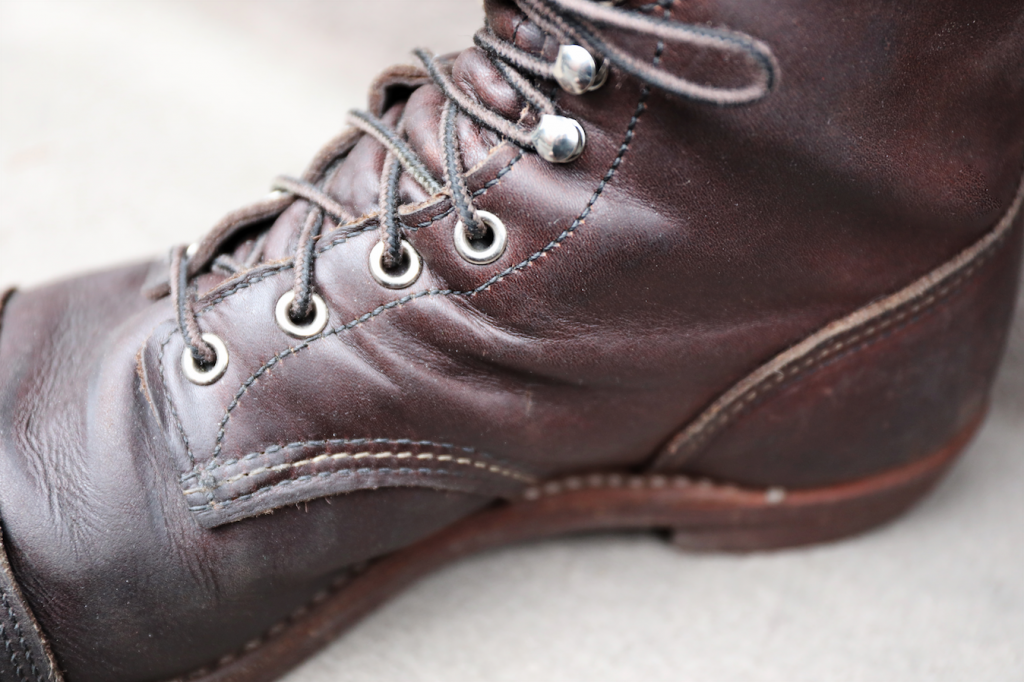
The classic Red Wing Iron Ranger.
3. The Width
- Buy a boot that cradles the ball of your foot — not pinches
This is where people get sloppy. A lot of guys say that if the width is uncomfortably tight, it'll eventually stretch. This isn't a great strategy.
"Some brands will be geared toward a wider foot and some toward a narrower foot, and that's more of an issue than the length," says Blitz. "If there's too much compression at the ball of the foot, that can cause discomfort and inflammation."
It's crucial to remember that the length of your foot won't change throughout the day, but the width will. Your foot is more swollen toward the end of the day, and that's when you should be trying on shoes and measuring the width in a store or with a Brannock device. (Bring thick socks as well, since most boots are designed to be worn with them.)
One more important point: a lot of folks say that you should never under any circumstances buy a boot with the expectation that they'll stretch. This is a decent rule to follow, but note that most boots will stretch — but only about a millimeter.
[Related: My list of The Best Boots for Wide Feet]
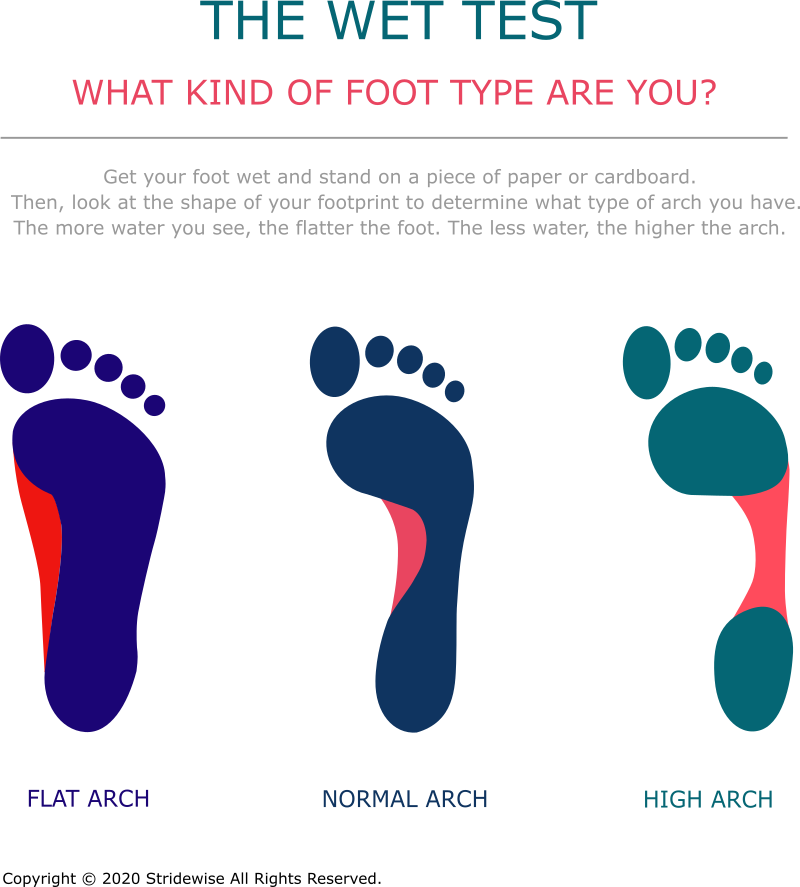
4. The Arch
- Find out how much arch support your foot type needs and how much is offered by the brand
Arches are tricky. Many boots don't have much in the way of arch support. Does it really matter?
"I think you need to know your foot. Do you have a flat foot or a high arch foot? That determines what you'll be comfortable in," says Blitz. "If you have a flat foot, you probably need a boot with some arch support. On the other hand, if you have a foot with a well-maintained arch, it probably doesn't matter as much."
He suggests a simple way to test this: step on a brown paper bag with wet feet. If the footprint left behind is flat from heel to toes, you've got flat feet. If there's an arch and the inner sole doesn't leave a mark, you've got yourself a good arch. It's not the end of the world if your feet are flat and your favorite boot doesn't have support — there are some ultra thin orthotic soles you might be interested in.
When sizing the foot on a Brannock, many people focus more on what their arch length suggests their shoe size is rather than what is suggested by the actual length of the foot. Your arch determines the widest part of the foot and how your foot will be supported in the boot itself, so if your heel and width fit fine in more than one size, and one size fits your arch better — this is an unlikely scenario, but it happens — you might want to pick the boot with your arch size.
[Related: The Best Insoles for Boots]
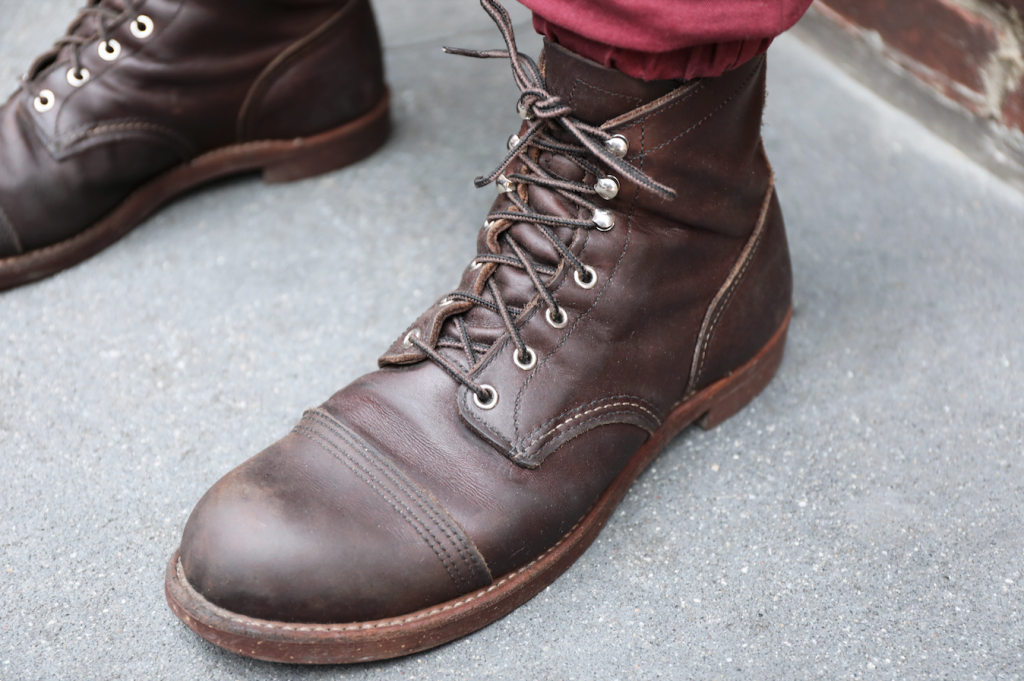
5. The Toe Box
- This is largely irrelevant if the rest of the boot fits well
"One challenge you have with boots is that normally, you base the fit of a shoe shoe on using your thumb to see where the tip of the big toe meets the end of the boot," says Blitz. "But with boots, the toe boxes are generally a lot stiffer so it's harder to gauge."
The first thing (and often the only thing) people do when trying on sneakers is to ask how much room should be in the toe of a shoe. Ironically, it's probably the least important thing about a boot's fit: if the previous four sections in this article are on point for you, the length is basically irrelevant because your foot will be moving well with the boot.
Never size down to reduce toe room. Everything above is infinitely more important. A small toe box can rub your feet and cause calluses, and there's no downside to a larger one if your heel, flex point, and width feel right. The toe box might be important for style, but it's not a huge component of fit unless it's way too tight.
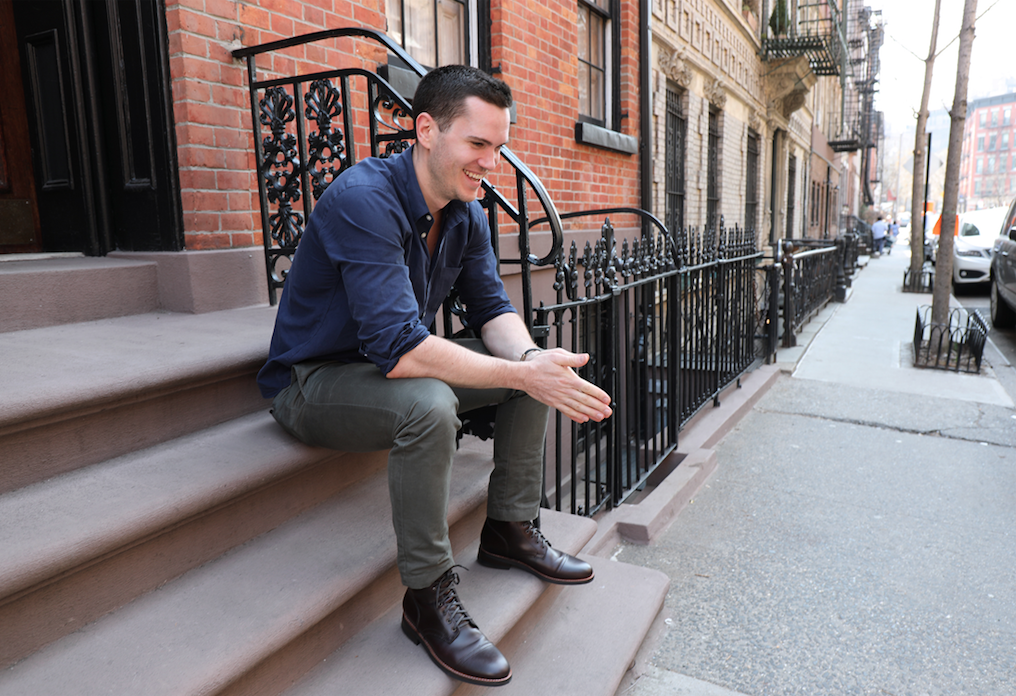
Wrapping Up
These are the five most important components of landing on your size, in descending importance. Largely, it's all about the flex point, heel, and width. Remember that sometimes, even if your heart is set on a brand, your foot just won't fit. This is a particularly important point for our wide-footed brethren. That a brand just isn't for you can be a tough pill to swallow, but remember to do right by your feet. Don't wear boots that take from you.
FAQs How Boots Should Fit
How do I know if my boots fit properly?
There are five areas to check. They are: the flex point, the heel, the width, the arch, and the toe box. Your boots should not feel tight. They should feel snug on the forefoot, they should have plenty of room in the toe box, and the heel should not slip more than a quarter of an inch.
How much room should be in a boot?
There should not be too much room or movement in your boot. It should feel snug around the forefoot. You do not want it to feel too tight. You do not want your foot to slide forward. Your heel should not move more than ¼ of an inch.
Is it better for a boot to be tight or loose?
Too tight and too loose are both indicative of a bad fit. Leather boots will stretch slightly if your boot is slightly tight. If your boots are too loose you can wear thick socks, buy insoles, or both.
How tight should boots fit at first?
Your boot should feel snug around the forefoot. You should not feel any discomfort or pain.
How to tell if boots are big?
Your boots are too big if you're foot moves forward in the boot and hit the front when walking downhill. Your boots are too big if you have a lot of extra laces after you time them. Your boots might be too big if your heel moves more than ¼ of an inch.
How much room should be in the toe of a boot?
There is a lot of leeway with how much room you can have in the toe of your boot. You are fine as long as the flex point of your foot matches the flex point of the boot and your toes do not press against the boot.
Should boots fit tight or loose?
Slightly too tight when wearing your thickest socks is fine, your boot will stretch but only a little bit. Slightly loose with your thinnest socks is ok as long as you don't feel any hotspots when you walk.
How should boots fit around the calf?
You want your boots to fit snuggly around the calf, more importantly, you want to make sure you can easily get them on and off.
How should boots fit around the ankle?
Boots can be loose or snug around the ankle depending on how tall they are and how tightly you lace them. You do not want them to be uncomfortably tight. If they are new the leather will soften over time.
The following two tabs change content below.
- Bio
- Latest Posts
By day: Manhattan-based journalist with reporting experience on four continents, published in Vice, Men's Health, Popular Science, and a bunch of other places.By night: ravenous consumer of anything and everything related to high end men's boots.Stridewise is where I nurture a maniacal obsession with footwear and share my findings. Say hey: [email protected]
hennessywhavillat81.blogspot.com
Source: https://stridewise.com/how-boots-should-fit/